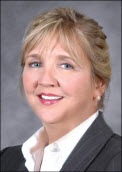Re: Walmart Health: Just had a great dental visit this morning, which was preceded by helpful reminders from Epic, and…
EMR Vendors on HITECH – Part Four of a Series
We asked several vendor executives a series of five questions related to the economic stimulus as it impacts electronic health records.
Much of the EHR-related compensation will come in the form of payment for improved outcomes. How do you expect that to be defined and what product capabilities will it require?
Allscripts – Glen Tullman, CEO

The government has aspired for some time to be able to implement comparative effectiveness analytics programs related to diagnosis and treatment protocols. The anticipation of a rapid EHR adoption curve over the next few years means there will be an exponentially larger pool of raw data available for these efforts, along with broad availability of the technology capable of collecting and transmitting that information. Chronic diseases such as diabetes, chronic obstructive pulmonary disease, hypertension, and others will likely continue to be a focus of this type of research. President Obama’s own personal interest in curing cancer will also likely lead to various manifestations of that disease being a focus of study.
Regarding product capabilities, improved outcomes will require that EHR products incorporate analytics functionality already available through Allscripts, with only the need to adjust the data pulled to match what CMS requires within the reporting process. We have for many years been looking past the point of mass EHR adoption towards a healthcare landscape in which quality care measures can be easily tracked and acted upon with the aid of our solutions. The government’s new focus on comparative effectiveness will only accelerate the timing of the transformation that we have long anticipated.
athenahealth – Jonathan Bush, CEO, President, and Chairman

We define it as it is currently spelled out in the legislation that was signed – which we also believe will be expanded over time. We are aware of a HIT Policy Committee being formed to put more context to that and we welcome any new criteria that they will want prior to the start of the program and the subsequent years following. Again, anytime more data or the need to report complex data is required it further supports our network-based model. To think over the five year program that CMS won’t want the number of measures and other data sets captured and reported on increased is short sighted. They will and the vendors that are able to keep pace with that beyond just some software upgrade will be the best positioned to assist providers.
eClinicalWorks – Girish Kumar Navani, President

We think that it is fair to require that providers be compensated for use of the system and not merely for purchasing one. eClinicalWorks is already participating in projects like the Primary Care Information Project (PCIP) in New York where eClinicalWorks is used as a tool for quality improvement, and we are paid once physicians demonstrate use and report on outcomes. We have spent the better part of two years improving our solution for clinical decision support for chronic and preventative care. EMRs should be judged by how they automate the office without reliance on paper and as a tool for better patient outcomes.
Eclipsys – Tom Cooke, VP and GM of Eclipsys Practice Solutions

Eclipsys believes there is a large body of valuable outcomes-based measurement tools in use today that should be used to help identify appropriate levels of EHR-related compensation including:
- JCAHO core measures
- Never events
- Pay-for-Performance / PQRI
- Functional status surveys
- Healthcare Effectiveness Data and Information Set (HEDIS)
- RDRGs, APR-DRGs etc.
We also believe there needs to be new measures developed that track outcomes of chronically ill patients across multiple episodes of care. Additionally, there should be statistically relevant ways at looking at health status of populations as well as individuals. Eclipsys continues to invest in software, content, monitoring tools, professional services methodologies and our client research to further these outcomes measurement tools.
eMDs – Michael Stearns MD, President and CEO

Pay-for-performance and care coordination programs like PQRI and the Patient Centered Medical Home will likely be modified to make better economic sense in both directions. Hopefully as these programs mature they will reward physicians who adhere to guidelines supported by evidence-based medicine. Regarding product capabilities, EHRs need to be able to capture information during documentation as “discreet” data that can be used for reporting. The systems also need clinical decision support tools that remind physicians of actions needed to be compliant with best practices. A mechanism that supports the automated updating of guideline information will also be central to the success of outcomes based compensation.
Greenway – Wyche “Tee” Green, President

We see this following the lines of the Physicians Quality Reporting Initiative (PQRI) and outcomes criteria that has yet to be defined by the Secretary. I hope it will be in collaboration with entities such as the Agency for Healthcare Research & Quality (AHRQ) and the National Quality Foundation (NQF). As far as what the EHRs will have to do; it will be around the capabilities of reporting/exchanging information efficiently. Many will have to build central data exchanges to accomplish this on a mass scale. Fortunately for us, we have a platform in place called PrimeExchange that enables this data exchange.
MED3OOO – Jay Anders, M.D., Chief Medical Information Officer

The greatest share of the incentive, in the beginning, will be paid for getting a system installed and fully operational. PQRI incentives based on demonstrated outcomes will start out as a smaller portion of the overall incentive and then grow. The government is moving very quickly to a population health management model with this administration. As CMS gathers more and more information about the ways physicians and hospitals deliver care, they will start to direct care to those physicians and hospitals that can demonstrate high quality through improved outcomes.
With healthcare costs consuming an ever-great portion of our GDP, CMS and other payers will move more and more towards a system in which costs are transparent and quality is rewarded. Payors, led by the government, will likely continue the trend toward “bundled” payments that reward providers for managing the total cost of an episode of care, and also facilitate the comparison of costs between providers.
The Congressional Budget Office predicts a $60 billion savings in healthcare costs by fully adopting EHR technology in the physician and hospital base. EHR product capabilities will be directed through the certification process to provide reporting data to support the quality improvement initiatives of CMS in high cost disease states such as diabetes. Ultimately, they will be a necessary part of data-driven pay-for-performance and pay-for-quality reimbursement systems.
Medsphere – Mike Doyle, CEO

Again, Medsphere would hold up Midland Memorial Hospital as a prime example of improved outcomes. We’ve already mentioned three key areas (patient mortality, infection, unreconciled medications) where improved outcomes make a difference in patient lives, but there are numerous others. Almost all physicians at Midland are using OpenVista for CPOE, which ensures closed-loop medication administration and a much safer process. So, in noting that CPOE is part of Stage 4 in the HIMSS Analytics EMR Adoption Model, perhaps Stage 4 and the use of CPOE by a certain percentage of physicians would be a good standard. The elimination of never events, since government has already started down that path, is also a minimal standard to incorporate.
NextGen – Patrick Cline, President

This also is a question that will likely be decided for us. But improved outcomes imply implementation of specific clinical processes, entry of patients and their data into the designed process, compliance tracking, and outcomes reporting. This will require a system to be robust enough, yet flexible enough, to configure required protocols, quality and outcomes measurements, and reporting tools without vendor-provided customizations. NextGen, by the way, already has many practices across the country that are tracking and reporting outcomes. In fact, many consider us to be on the forefront of providing the functionality that allows practices to receive significant incentive payments under such programs as the Physicians Quality Reporting Initiative (PQRI).
QuadraMed – Keith Hagen, President and CEO

We expect improved outcomes to be largely based on the reporting mechanisms that exist today with The Joint Commission and CMS. It is important that reimbursement will be tied to these outcomes, not just quality reporting. We’ve seen this pay-for-performance regime coming for a while now and the ARRA will only accelerate it. We are well positioned to help QuadraMed clients both achieve and demonstrate improved outcomes. We have a strong solution set in place today that our clients can take advantage of: We are developing evidence-based order sets and advanced clinical decision support within QCPR. We have a market leading HIM solution set, including coding, compliance and abstracting. (This is an area most of our competition is relatively weak on and will become increasingly important in a pay for performance world.) Finally we have a web-based Joint Commission reporting and benchmarking tool (COPE – clinical outcomes practice evaluator) that clients are using today for quality reporting purposes.
Sage – Lindy Benton, Chief Operating Officer

A significant part of this legislation is the ability to prove efficacy of different treatment options. Adhering to, learning from and contributing to evidence-based medicine and protocols is one of the main benefits of having a structured-documentation, single-database practice management and electronic health record system. Sage Intergy EHR uses MEDCIN structured nomenclature to create codified data during the encounter. The Sage Intergy EHR product, combined with the Sage Practice Analytics ad hoc reporting system to extract data from the system, perfectly positions Sage to comply with and provide employers, payers, CMS, NCQF and all other entities the required information. The physician also has analytical capabilities at their fingertips so they can repurpose information into knowledge for practice efficiency and improved quality of care.
SRSsoft – Evan Steele, CEO

The incentives are intended to help bring about better outcomes. That won’t be accomplished by merely purchasing an EMR, regardless of who pays for it. Not only must the product be functionally competent, it must be a tool that is “usable” by physicians and other providers without impacting their productivity or getting in the way of providing care.
“Government” EMRs force physicians to input and collect data across the board. In contrast, hybrid EMRs identify the measures of interest up-front and limit the data collection appropriately, sparing physicians an overwhelming and distracting task. Once the government identifies the quality measures linked to the outcomes they want to evaluate, it should be up to EMR vendors to determine the most efficient way to collect this data. Why put the cart before the horse?
Improved outcomes are dependent upon several capabilities. First, ePrescribing will prevent medical errors due to drug-to-drug interactions, allergic reactions, duplicate prescribing, and illegibility of prescriptions, and it will help identify drug seekers. The data collected through ePrescribing will facilitate the measurement of the comparative effectiveness of drug treatments. The SRS hybrid EMR already includes a fully integrated, robust ePrescribing module.
“Government” EMRs typically require the building of structured “templates” as the means to collect exam data. This is time-consuming, costly, and inflexible for practices to do. SRS has developed a variety of options to facilitate efficient data collection to allow physicians to document exams the way they prefer. That is the advantage of the hybrid EMR. We also have the ability to incorporate whatever standards may emerge because of our Open Path™ architecture and user functions like “PowerTabs” and “Plug-Ins” that easily incorporate other external products and modules. We anticipate being able to respond quickly to the quality-measurement standards when they are published, as we have done with PQRI.
“Improved outcomes” will result from assisting the doctor in following pre-defined, evidenced-based treatment plans and protocols. We believe an EMR should be more than a repetitive, inflexible set of exam templates. It should be an adaptable tool set that helps busy physicians operate more efficiently and effectively. That means things like generating reminders and alerts. For example, the hybrid EMR can do the calculations and analysis on each patient and provide recommendations (e.g., prescribe beta blockers to all patients over 18 with history of CAD and MI).
